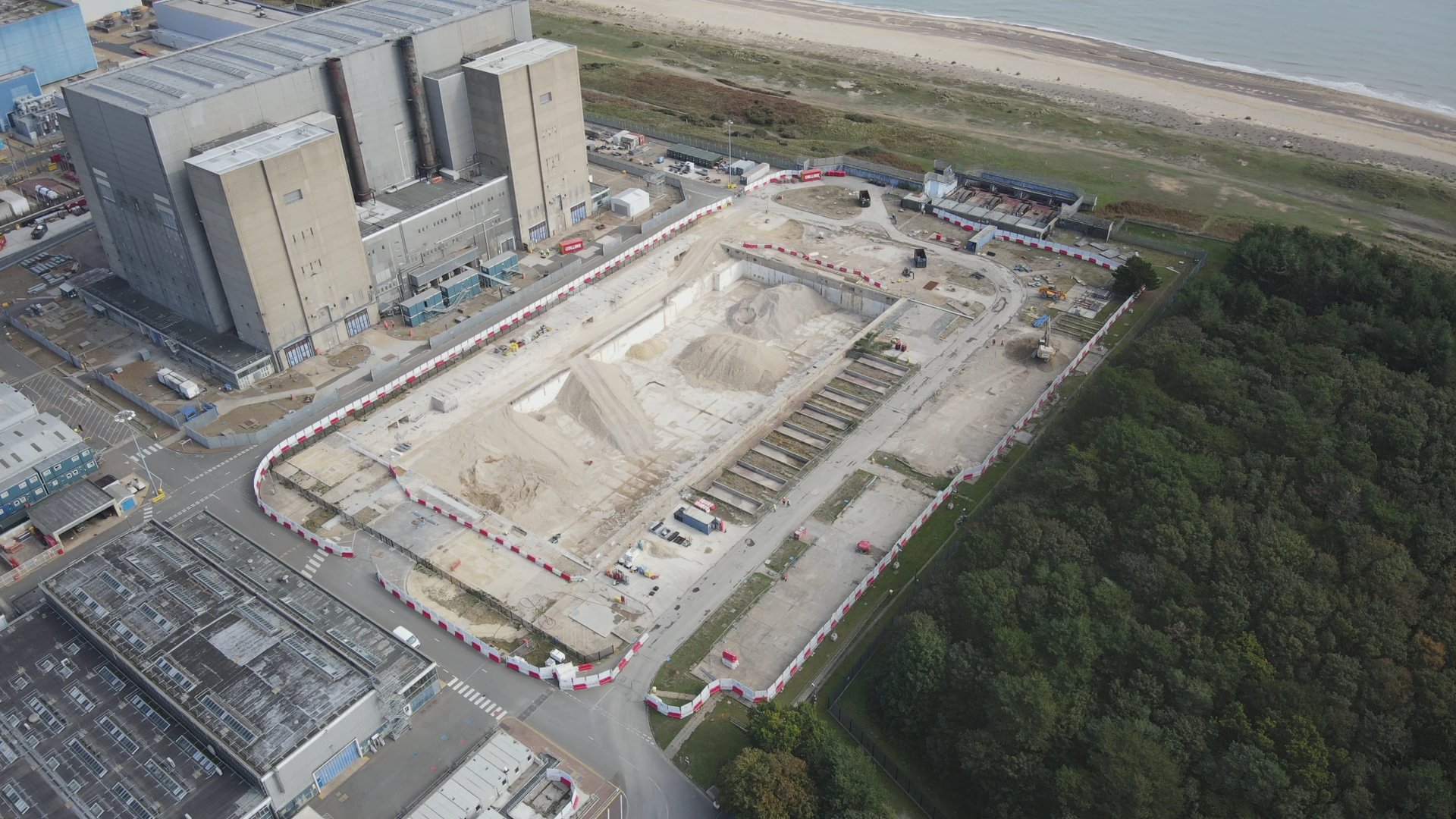Sizewell C concrete reuse from Sizewell A: circular design lessons for engineers
Reviewed by Joe Ashwell

First reported on The Construction Index
30 Second Briefing
More than 15,000 tonnes of crushed concrete from the demolished turbine alternator plinths at Sizewell A has been certified to WRAP quality protocol and reused as sub-base for foundation platforms in the Sizewell C main construction area, just a few hundred metres away. Nuclear Restoration Services and Sizewell C report the material transfers are complete, avoiding landfill and an estimated 28 tonnes of CO₂ while cutting heavy truck movements through East Suffolk. The reuse scheme was initiated by the Environment Agency and East Suffolk Council as part of a wider push for circular decommissioning practice on nuclear sites.
Technical Brief
- Recycled aggregate originates from demolished turbine alternator plinths within Sizewell A’s turbine hall.
- Nuclear Restoration Services (NRS) led demolition, on-site crushing, testing and certification activities at Sizewell A.
- Crushing and WRAP protocol compliance testing have been ongoing since September before any material transfer.
- Material is reused as engineered sub-base for multiple foundation platforms within Sizewell C’s main construction area.
- Environment Agency applied an “enabling approach to regulation” to permit reuse of nuclear site demolition arisings.
- Environment Agency states it is pushing NRS to replicate this circular decommissioning approach at all UK sites where feasible.
Our Take
Among the 53 Sustainability/Projects-tagged pieces in our database, very few involve nuclear sites in the United Kingdom, so Sizewell C’s reuse of material from Sizewell A stands out as one of the more advanced circular-economy applications in the nuclear sector rather than in mainstream building or mining projects.
The involvement of the Environment Agency and East Suffolk Council at the Sizewell C site signals that regulatory comfort with on-site reuse of demolition arisings is strengthening in Suffolk, which could shorten approvals for similar materials strategies on other large infrastructure schemes in the region.
Although 28 tonnes of CO2 emissions prevented is modest at project scale, our coverage of other UK infrastructure jobs suggests that once a recycled-concrete supply chain is proven on one major site, contractors often replicate the methodology across multiple phases and assets, multiplying the carbon and cost savings over time.
Prepared by collating external sources, AI-assisted tools, and Geomechanics.io’s proprietary mining database, then reviewed for technical accuracy & edited by our geotechnical team.
Related Industries & Products
Construction
Quality control software for construction companies with material testing, batch tracking, and compliance management.
Mining
Geotechnical software solutions for mining operations including CMRR analysis, hydrogeological testing, and data management.
CMRR-io
Streamline coal mine roof stability assessments with our cloud-based CMRR software featuring automated calculations, multi-scenario analysis, and collaborative workflows.
HYDROGEO-io
Comprehensive hydrogeological testing platform for managing, analysing, and reporting on packer tests, lugeon values, and hydraulic conductivity assessments.
GEODB-io
Centralised geotechnical data management solution for storing, accessing, and analysing all your site investigation and material testing data.